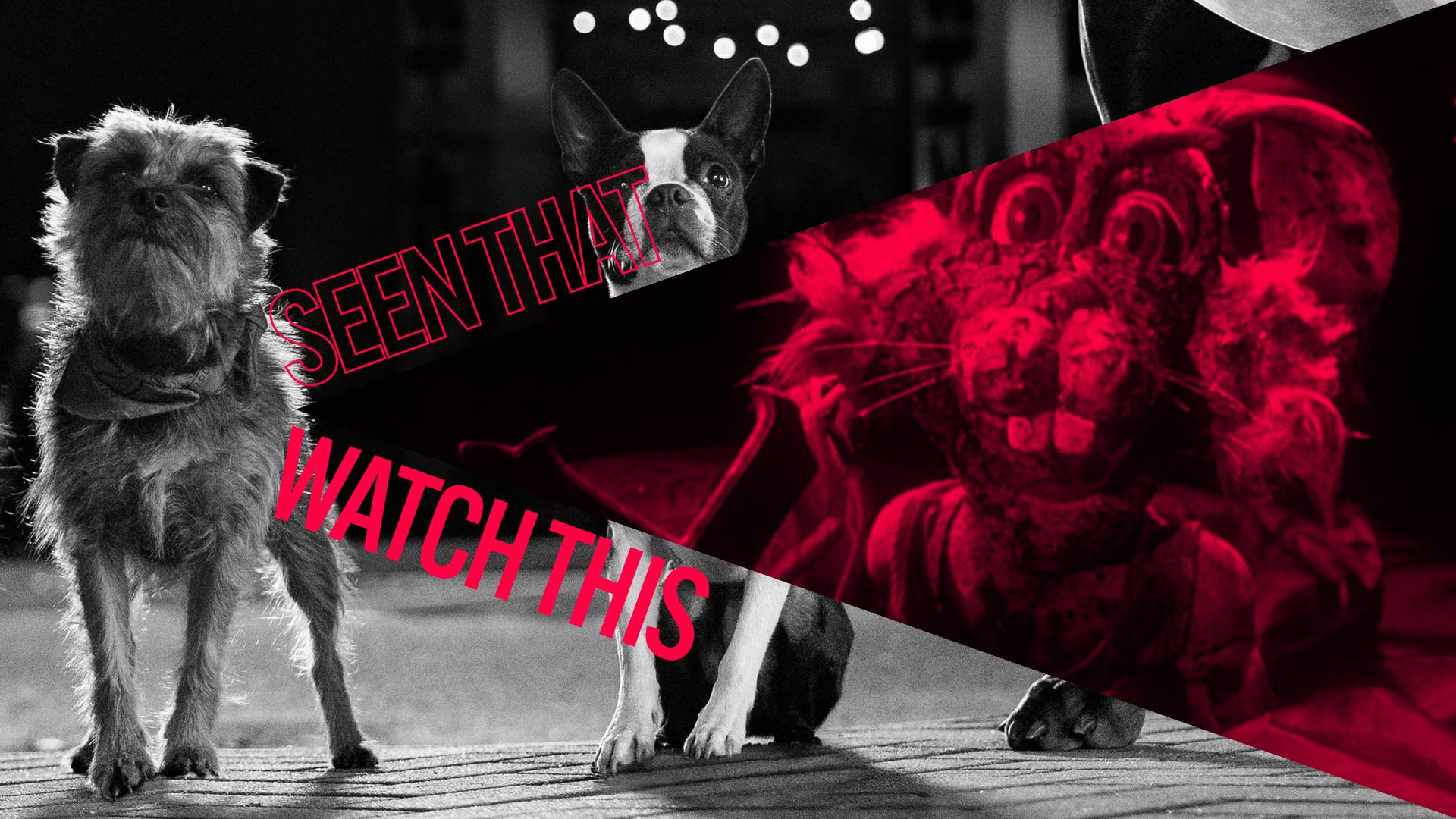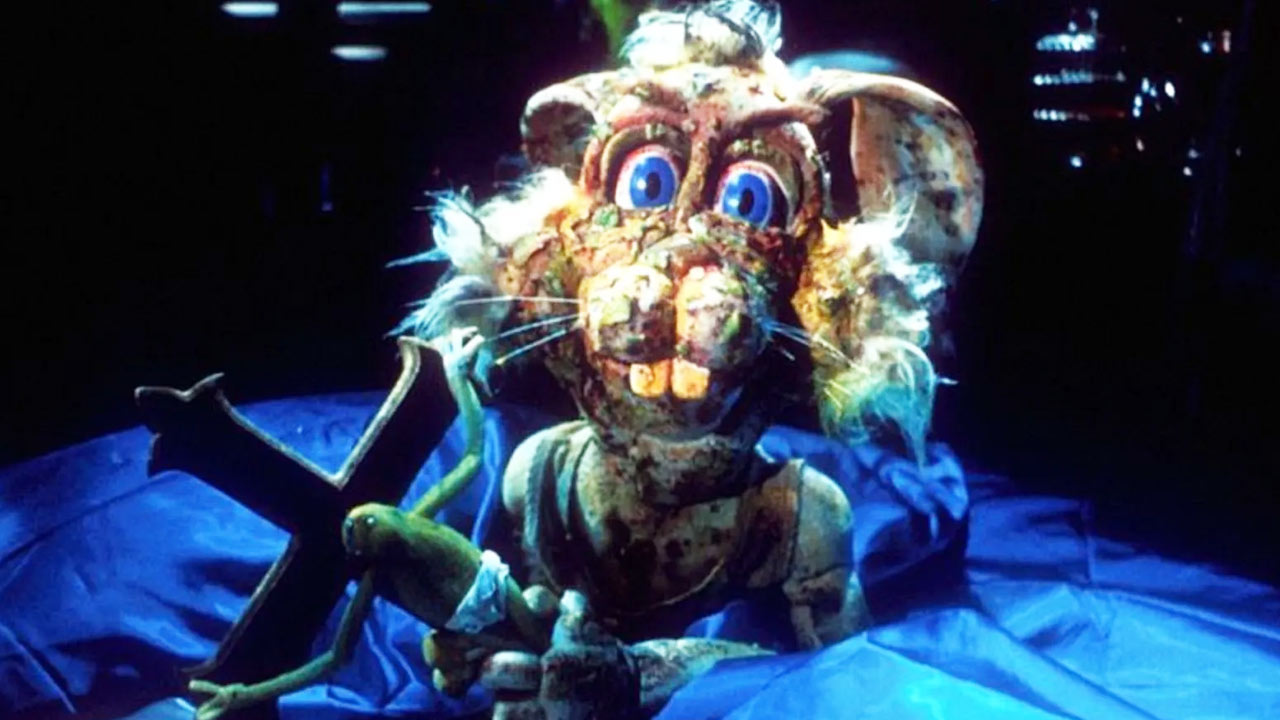Strays plus 3 more comedies about cute animals going feral

Seen That? Watch This is a fortnightly column from critic Luke Buckmaster, taking a new release and matching it to comparable works. This week, he takes a look at the comedic subgenre of animals behaving very badly, inspired by repetitive new talking dog movie Strays.
The word “anthropomorphized” describes the assigning of human characteristics onto animals. As far as I’m aware, the terminology isn’t specific enough to describe the characters in Strays: there’s no word for animals assigned the characteristics of potty-mouthed drifters who get drunk, high, and have sex with couches and garden gnomes.
Director Josh Greenbaum takes cute animals and spectacularly sullies them. Initially the core joke involves unrequited love and undeserved loyalty. The Border Terrier protagonist Reggie (voice of Will Ferrell) has a cruel bonghead owner, Will Forte’s Doug, who treats him like dirt and dumps him in the wild—only for the adoring pooch to keep returning, thinking it’s a game. In dangerous dark alleyways he meets a Boston Terrier named Bug (Jamie Foxx), who breaks the news that “he left your ass!” and introduces Reggie to a life of la dolce doggo vita. The simple pleasures, including friendship with fellow arse-sniffing nomads.
The term “gross out” is generously applied to comedies. But some of the jokes here really are gross. It both helps and hurts that Greenbaum knows how to stage a sight gag, as he demonstrated in his previous film—the less exhausting Barb and Star Go To Vista Del Mar. I like Strays, partly because it narrativises another plane of existence, relishing the confusion and disconnect between species and states of mind. But the humour is repetitive and its perverse spirit unrelenting. If you don’t enjoy its groove, you’ll be caught in a nightmare.
The same is true, to varying degrees, of the three films listed below, which are also prime examples of comedy’s “animals go feral” sub-genre. I’ve ordered them from most to least stomach-turning.

Meet the Feebles (1989)
Peter Jackson’s outrageous second feature is the magnum opus of “cute animals going feral.” It’s completely crazy: off-the-wall and out of the richter. The director conjures a wide variety of cute or once-cute animals, including a hedgehog, bunny rabbits, a bulldog, a sheep and frogs. But this talking animals movie has a specific cultural context, parodying The Muppets. It opens with the titular puppet troupe singing and dancing in rehearsal, then shockingly reveals its true colours. The music dies down and the show’s director, Trevor the Rat (Brian Sergent), abuses one of his stars: “alright you fat scrag, move your arse.”
From that moment, Jackson cranks up the grotesquery and pushes it in our face. Before you know it, you’re not just listening to stuffed animals saying “anal antics” but watching those antics for yourself. Instead of having a story, per se, Meet the Feebles swirls like a sick fly around the troupe’s messed up members, dropping visions that would (and probably did) scar children for life. I kind of admire the film’s audacity, and I kind of want to see every copy of it tracked down and incinerated. It’s a genuine original—for better and, mostly, for worse.

Ted (2012)
Relinquish the things that help you through childhood, or they’ll stunt your growth as an adult. There’s a serious message in Ted, buried beneath the soiled underwear and bong-stained carpet (and before we progress, yes, I’m aware teddy bears aren’t actual animals…no need to split hairs). Director Seth MacFarlane begins in mock fairytale mode, protagonist John wishing upon a star that his inanimate little buddy will come alive. His wish is granted and he and Ted (voiced by MacFarlane) grow up together, into couchbound weed-smoking manchildren.
You can recreate the central gag at home. Look at your childhood teddy (or any teddy) and imagine it’s a horny devil who swears, smokes, drinks and fornicates, returning in the early hours of the morning smelling like Satan’s sweat. This comedic premise relies on contrasting aesthetics of cuteness with vulgarity. The sweet and lewd, sinless and sinful.
It’s an entertaining tension, albeit a bit of a one trick pony. So MacFarlane broadens it out into a sentimental story about friendship. I love what Ted’s character represents: the idea that Puff the Magic Dragon never slid back into his cave. Instead he grew up, got a bad attitude, and brought you down with him.

Babe: Pig in the City (1998)
Babe: Pig in the City
In another reality, Strays would be described as “like Babe, but messed up.” In our reality we already have a messed up Babe—its sequel, Pig in the City. I feel bad, inserting this extraordinary film into a discussion of “feral” animals. Its wonderful characters don’t deserve to be tarnished by such an ugly word. This motley assortment of social outcasts include the titular pig, a wheelchair-using Jack Russell, a pregnant chimp, and a Blanche DuBois-esque pink poodle strongly implied to be a former sex worker. Pig in the City has often been called dark. I prefer to describe it as a production that pulls off what only the best family films achieve, evoking the child in the adult and the adult in the child.
After winning a sheepherding competition in the first film, Babe (voiced by E. G. Daily) heads to the big smoke to save Hoggett Farm, but finds himself taking refuge at a hotel for abandoned animals. Director George Miller had an amazing set built: a surreal composite city with Venice-like canals. A gangster Bull Terrier who chases Babe almost drowns in one of them. But the kind-hearted protagonist is no swine, saving him in an amazing scene I show anybody who expresses doubt about the merits of this amazing movie. Still terribly under-appreciated, the time has come to thank the pig.























